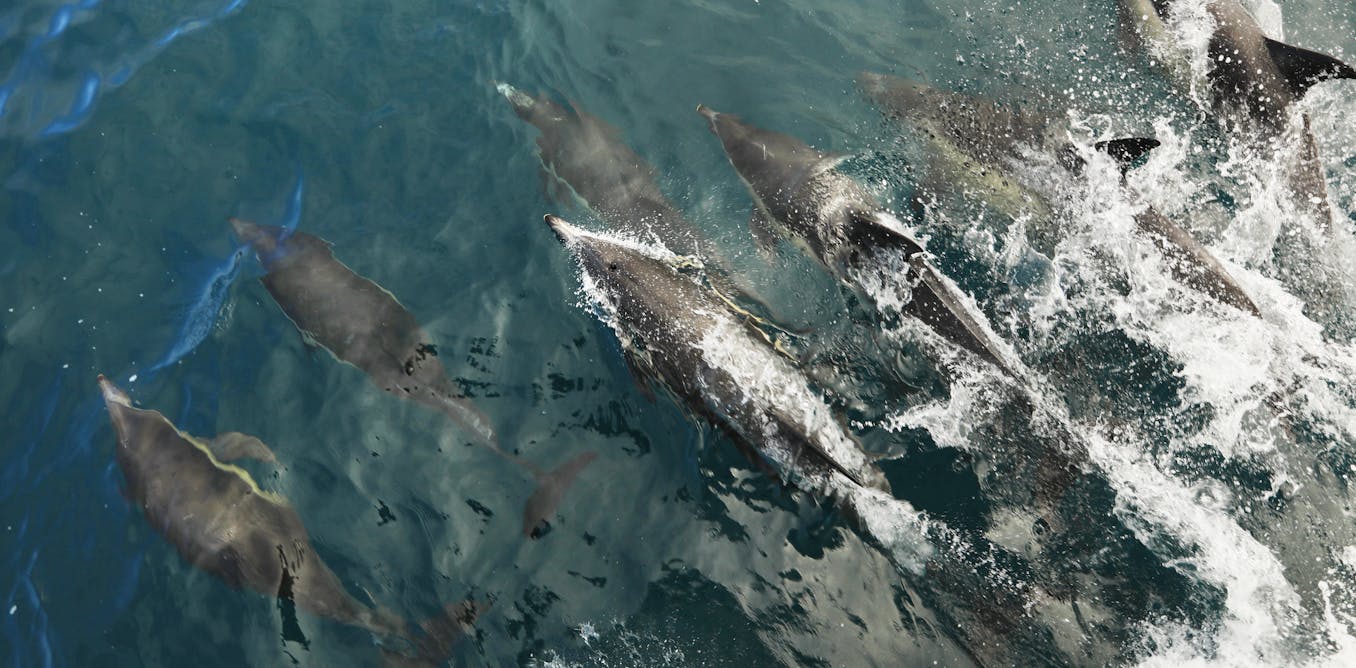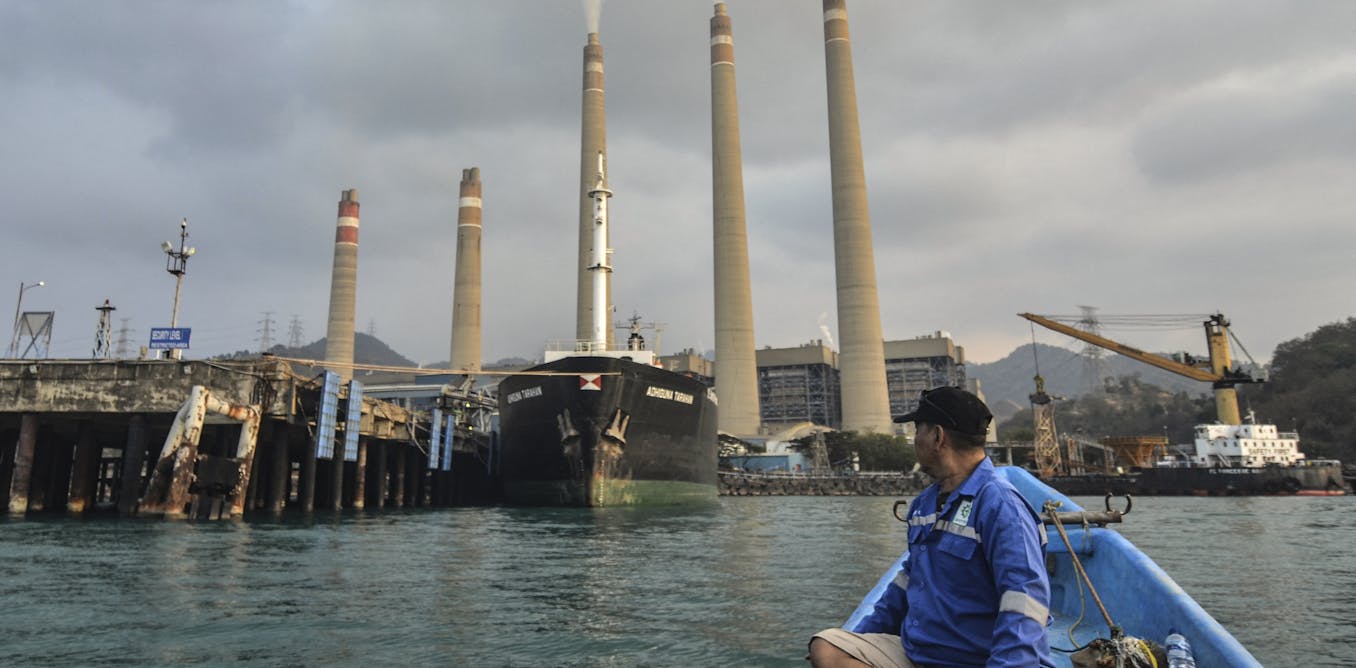Watch the video by The Ultimate Discovery
Top The Chatham Islands- Its Unique Forty-Five-Minute Leap and a world without mammals. Have you ever stumbled upon an island where time’s pulse defies norms, and history echoes with chilling narratives? Well, that is the mysterious realm of the Chatham Islands, nestled far from New Zealand’s mainland. These secluded isles harbour secrets that defy logic, stirring the imagination with their mysteries. Yet, there exists another island, even more extraordinary—an untamed enigma where time takes on an unfamiliar cadence, and history’s whispers are spine-chilling. Join us as we embark on a journey to the most unusual island in New Zealand where time runs differently and history is terrifying.
Check Out These Videos:
The Most Unusual Island In New Zealand Where Time Runs Differently And History Is Terrifying
https://www.youtube.com/watch?v=4US9VJqyarM
An ambitious shift to renewable energy is underway in the chattam islands have you ever stumbled upon an island where time’s pulse defies norms and history Echoes with chilling narratives well that is the mysterious Realm of the chattam islands nestled far from New Zealand’s Mainland these secluded Isles Harbor secrets that defy logic stirring
The imagination with their Mysteries yet there exists another Island even more extraordinary an untamed Enigma where time takes on an unfamiliar Cadence and history’s whispers are spine chilling join us as we embark on a journey to the most unusual Island in New Zealand where time runs differently and history is
Terrifying the chattam islands unique 45-minute leap the chattam islands in New Zealand adhere to a distinctive time zone known as chatam Standard time which is 45 minutes ahead of the Mainland established in 1957 to synchronize their distinct geography this time shift shapes the local ‘s lives for visitors
Adjusting watches is an introduction to the Island’s peculiarity however for the chadam Islanders it’s integral to their identity influencing everything from work schedules to cultural practices this 45-minute leap isn’t just about time it’s about aligning with Nature’s rhythms living ahead yet deeply connected to New Zealand the islands Foster a resilient Community their
Temporal distinction has shaped a self-reliant culture rooted in mutual Reliance and shared experiences this time isn’t a mere Quirk it’s a symbol of the Islanders history and their unique Journey Through Time the story of the chadam islands unfolds like a fabric woven with threads of peaceful eras and
Turbulent times between 1,00 and 1,600 a courageous group embarked on a remarkable Journey believed to have set sail from New Zealand’s South Island venturing into the vast and Uncharted Eastern expanses for an extended span enduring a 500 Mile voyage across turbulent Seas they encountered no trace
Of land it was a Relentless Pursuit into the unknown until at long last distant Islands appeared on the horizon a discovery now known as the chadam islands nestled within the folds of New Zealand’s domain these Intrepid voyagers christened the Newfound Haven Reco meaning Misty Sun these remote cags at
The world’s Edge became their Refuge an isolated and harsh terrain comprising two sizable islands and Scattered smaller ones the archipelago posed former able challenges to agriculture its climate was unforgiving with incessant rainfall drenching the land for 200 days each year and fierce winds sculpting the islands trees into contorted forms their branches nearly
Touching the ground to the east lay an expansive ocean seemingly endless with a staggering 5,000 m Gap separating the islands from the nearest land mass South America the moriori a community that settled in the chadam islands adapted their way of life to the harsh conditions they encountered upon arrival
Nearly every facet of their existence from diet to clothing Transportation social structures and even military practices was adjusted to suit the challenging environment they found themselves in for centuries they embraced a peaceful hunter gatherer lifestyle harmonizing with their surroundings however their peaceful existence was shattered in
1835 when members of two Mai tribes from Mainland New Zealand arrived on the chadam islands this counter led to a devastating event where a significant portion of the moriori population between a 6th and a fifth was killed and the survivors were Enslaved the arrival of these Maui tribes remains shrouded in
Mystery leaving unanswered questions about their motives and circumstances leaving a gap in historical understanding according to moriori Folklore as shared by the New Zealand historian James bellich in making peoples their ancestral Tales speak of their gods guiding them to the east where they venture Ed to settle new
Lands the moriori hailing from the same seafaring lineage that traversed vast expanses of the world’s oceans using doubleh hold canoes were part of this ancient tradition of exploration and settlement across the Pacific from New Zealand to Hawaii to the Easter Islands this tragic event in 1835 stands as a
Stark contrast to mori’s centuries long pacifist existence the arrival of the Maui tribes drastically altered the course of their history leading to a period of immense suffering and sub subjugation for the moriori people the chatam islands unlike some of their tropical counterparts like Fiji or Vanuatu and distinct from massive land
Masses like New Zealand occupy a unique space chadam Island the larger of the two primary Islands spans approximately 30 m in width with a significant portion of its land dedicated to a central Lagoon these islands shaped by volcanic activity boast striking Basalt Cliffs and circling them presenting a varied
And captivating landscape within a relatively compact area a world without land mammals the Topography of the chattam islands is a spectacle of diversity from Hills and Valleys to Meandering rivers and streams all beneath a lush covering of ferns and Nica Palms the islands create a picturesque Mosaic to the South lies Pit
Island constituting around a tenth of the size of chadam Island the islands experience temperatures that reach highs of about 65° F in January making them both cold and inclement unsuitable for cultivating traditional Polynesian vegetables such as sweet potato Taro or yam what sets the chattam islands apart
Is not just their size but their ecological distinctiveness devoid of native land mammals these islands are instead home to a thriving population of leggy shore birds and Forest fowl including the warbling tuille and the melodious bellbird the absence of land mammals creates a unique environment where Aven life takes Center Stage
Contributing to the Island’s ecological identity the moriori survival on the chattam islands was intricately tied to their relationship with the sea over a couple of centuries following their arrival they developed a practical way of life that remained largely unaltered until the arrival of Europeans in 1791 rather than adopting traditional
Agriculture the moriori honed the art of harnessing the Island’s wild vegetation as noted by historian Michael King in his 1989 book moriori a people rediscovered the moriori f focused on manipulating the Island’s wild plants particularly the copi for its Berry kernels and fern Roots they cultivated Fern roots in clearings and along the
Edges of copi groves where the soil was richer imparting a pleasant nutty flavor to the root despite the abundance of plant species on the chattam islands only about 30 were deemed edible and none were particularly known for their taste according to King this Reliance on the land’s wild vegetation showcased the
Moriori Adaptive stability and resourcefulness they didn’t rely on conventional agriculture but rather worked with the natural environment making the most of what the islands offered their survival was a testament to their ability to adapt and Thrive within the limitations of their surroundings the moriori diet although not characterized by especially
Flavorful or diverse Foods reflected their deep understanding of the Island’s flora and their adeptness at utilizing what was available this relationship with their environment became a defining aspect of their cultural identity and resilience in the face of the challenges posed by the chattam islands unique ecosystem life on the chattam islands
For the moriori people revolved around the ceaseless quest for sustenance from the sea their survival depended on the diligent efforts of women and children during the Tranquil Seasons spanning from October to April with meticulous dedication they combed the rocks for specific shellfish while men ventured out using flax woven Nets skillfully
Capturing an array of sea Treasures such as Cod grouper Moi and tarakihi throughout the year the moriori engaged in the pursuit of seals a vital source of sustenance providing blubber meat and skins these skins served a multifaceted role crafted into waterproof cloaks with the fur positioned inward offering protection against the elements their
Diet was predominantly Maritime supplemented by crayfish seaweed and a modest variety of coastal and Forest Birds while sustenance was available life on the remote Islands was formidable and often abbreviated despite the abundance of food existence remained arduous and transient the documented average lifespan peaked at a mere 32
Years with a significant portion of the population succumbing during infancy portraying the harsh realities of their daily lives remarkably the primary cause of mortality did not stem from predators conflicts or famine but rather from the consequences of consuming gritty shellfish which inflicted damage to their teeth over a lifetime the
Repercussions of this Dental wear were profound often leading to bacterial infections exacerbated by the prevalent respiratory issues aggravated by the perpetually damp and cool climate thus the seemingly innocuous Act of subsisting on shellfish crucial for survival paradoxically contributed to their health Decline and mortality illustrating the delicate balance between sustenance and its unintended
Consequences in their environment the pillar of moriori pacifism the moriori arrived on the chatam islands aboard Double H canoes but survival demanded Innovation these canoes transformed evolving into vessels more suitable for navigating the turbulent Seas surrounding the archipelago referred to as kurari or wash through rafts they were constructed with bound reads
Forming the floor and sides utilizing inflated kelp to stay buoyant amidst the harsh weather and choppy Waters some carrari stretched up to 50 ft long and were used for voyages to Offshore rocks where seals and Albatross were hunted however the most significant adaptations extended Beyond diet or Maritime Transportation the remote nature of
Their existence with a small population of merely 2,000 individuals necessitated a Reformation in societal and political structures as well as conflict resolution methods moriori settlements comprising up to 100 people were scattered across the larger islands in 1873 the Catholic World magazine featured an extensive interview with coach a moriori man employed on an
American vessel he described their centuries long existence of peace and plenty governed by a democratic system where their Affairs were managed by a council of esteemed individuals in contrast to many other Polynesian societies characterized by Bloody intertribal Warfare and in Mainland New Zealand even instances of cannibalism
During clashes between Mai W the moriori Embraced pacifism under the principle known as nunu’s law this commitment to peace stood as a defining characteristic of moriori society despite residing in a world where conflict was prevalent among neighboring communities the moriori ASU violence favoring peaceful resolutions and communal consensus their adherence
To nunu’s law a Doctrine emphasizing nonviolence and Collective decision-making contrasted starkly with the tumultuous and often violent interactions among other indigenous communities in the region the moriori adoption of pacifism wasn’t merely a passive choice but a foundational principle that shaped their societal fabric their commitment to resolving disputes through dialogue and
Maintaining a harmonious coexistence within their small scattered Settlements showcased a distinctive ethos of non-aggression and cooperation defying the prevalent Norms of their time their adaptation to the harsh environmental conditions extended Beyond Innovative seafaring techniques to include the development of a unique sociopolitical structure centered on peaceful resolution ution and communal governance
The moriori ancestral figure Nuku wua held a pivotal role in shaping their societal Norms establishing a code of conduct that endured until the arrival of the Maori the law he proclaimed as recounted by Alexander Shand carried a solemn decree KATU tangata me tapu toake which translates to man-slaying must cease henceforth Forever This
Fundamental law encapsulated the essence of moriori beliefs prioritizing peace and forbidding The Taking of human life in instances where physical confrontation became unavoidable moriori men were permitted to engage in combat using tupar poles roughly the width of a man’s thumb and a couple of feet in length however there existed a critical
Stipulation the conflict was to cease immediately this stringent adherence to nonviolence was a core tenant of their society where even in the throws of Confrontation the preservation of Life took precedence Nuku wanua decree held immense significance an serving as both a guiding principle and a cautionary admonition as chronicled by King may
Your bowels rot the day you disobey this Stern warning carried profound implications emphasizing the severity of defying the sacred law of nonviolence established by Nuku wua it underscored the deeply ingrained belief in the sanctity of life and the severe consequences that awaited those who disregarded this fundamental principle
Of moriori society the legend of Nuku UA and his law not only acted as a moral compass but also represented the unwavering commitment of the moriori to uphold peace even in the face of conflict it epitomized a profound respect for Life emphasizing restraint and Harmony within their Community a
Stark contrast to the prevailing Norms of warfare and aggression seen in many other societies meritocracy among the moriori in many Pacific island cultures the display of masculinity is often intertwined with acts of warfare and the endurance of extensive body tattoos however among the moriori the traditions of tattooing were notably absent instead
They established alternative benchmarks to demonstrate Valor and worth as documented by King one Avenue through which moriori individuals showcased bravery was during birding Expeditions particularly when navigating treacherous Rock faces even those that were sheer or concave the audaciousness and fearlessness displayed while landing on these formidable surfaces became a
Testament to their courage serving as a distinctive marker of Valor within their society craftsmanship also played a pivotal role in defining Merit manufacturing Haled adses a type of Axe was regarded as a skill that reflected an individual’s competence and capability the expertise demonstrated in crafting these essential tools became a
Measure of one’s worth and proficiency within the community moreover the capacity to dive into turbulent Seas to gather crayfish was esteemed as a remarkable feet those who could resurface with crayfish in both hands and a third held in their mouth exhibited extraordinary prowess and resilience earning admiration and recognition for their capabilities these
Acts of Bravery craftsmanship and physical prowess carried substantial weight in determining leadership roles within moriori Society unlike the conventional hereditary systems prevalent in other Polynesian Islands where leadership often passed through familial lines the moriori emphasized these individual Feats as criteria for appointing their Chiefs known as irii
The selection of irii based on such displays of skill and courage emphasized a meritocratic approach to leadership where qualities of Valor craftsmanship and physical adeptness outweighed traditional lineage this distinctive method of appointing leaders highlighted the significance of personal achievements and capabilities in shaping the governance and social structure of
The moriori deviating from the inherited leadership models prevalent in neighboring Polynesian cultures the absence of tattooing among the moriori replaced by these valorous Pursuits showcases the diversity of cultural expressions across the Pacific their emphasis on individual Merit and prowess rather than solely relying on lineage for leadership underscores the unique
Societal values and priorities that distinguished the moriori within the broader tapestry of Polynesian cultures Shan’s account provides a vivid glimpse into the unique lifestyle and social dynamics of the moriori people during the late 19th century shedding light on their distinctive approach to conflict resolution and sustainable living practices rather than resorting to
Warfare moriori tribes engaged in organized expeditions to each other’s territories these Expeditions though resembling military campaigns with incantations uttered for their success were devoid of actual conflict the ritualistic nature of these encounters akin to incantations or possibly resembling the mai Haka exemplified their method of resolving disputes through ceremonial gestures rather than
Violent confrontations the mori’s predominant way of life was marked by peaceful coexistence they married young lived in unfortified a-shaped houses insulated with bark for warmth and during times of abundance enjoyed three meals a day however during periods of scarcity they scaled back to a single meal showcasing their adaptability to fluctuating environmental conditions
Their sustainable practices extended Beyond conflict resolution and everyday living the moriori employ an intricate system of rules and rituals to manage their resources and ensure the long-term preservation of their environment Hunting Expeditions were characterized by cooperation rather than competition emphasizing the collective effort to sustainably harvest resources without depleting them furthermore specific
Species of animals were prohibited from consumption during certain months allowing these populations time and space to replenish and stabilize nunu’s law with its fundamental prohibition against taking human life life not only served as a moral guideline but potentially acted as a safeguard against internal conflicts with a small
Population size the loss of even a few individuals due to Violent disputes would significantly impact the community’s viability thus the law may have acted as a protective measure ensuring that disputes were resolved through nonviolent means and minimizing potential harm within their tightly knit Society disruption of moriori existence by exploitation the unintended encounter
Between the British HMS chadam and the moriori in November 1791 marks a pivotal moment that disrupted the longstanding peaceful existence of the moriori people the navigation error that brought the British ship to the chadam islands inadvertently initiated a clash between two vastly different cultures the moriori having lived in isolation for
Centuries lacked previous contact with people outside their Community their response to the arrival of the British as documented in the ship log initially conveyed hostility through threatening gestures an understandable reaction from a group encountering Outsiders for the first time without understanding their intentions conversely the British crew experienced in encountering indigenous
Communities sought to establish friendly relations they attempted to bridge the communication gap by offering items like helmets beads and red cloth as a gesture of Goodwill hoping to secure Provisions such as food and water from the mor Ori however their attempts at establishing Rapport were met with reluctance and non-cooperation from the moriori
Miscommunication and cultural misunderstandings escalated tensions leading to a skirmish between the British and The moriori Tragically amidst this confrontation a moriori man named tamak kuroro was fatally shot and his body was left on the beach a distressing outcome that further exacerbated the already strained situation this encounter marked by
Misinterpretation and The Clash of two vastly different worlds underscored the challenges arising from cultural isolation and the difficulties in establishing peaceful interactions when faced with unfamiliar customs and languages the incident marked a tragic Turning Point disrupting the tranquility and peace that had characterized mori’s life for centuries and foreshadowing the
Challenges and upheavals that would follow in the wake of subsequent European contact the aftermath of the encounter between the British and the moriori left a profound impact on mori’s perceptions and subsequent actions despite their initial misinterpretations the moriori believed they had transgressed Nuku law by engaging in conflict with the newcomers in
Acknowledgement of this perceived violation tamako’s body was left on the shore as a symbolic gesture signifying their recognition of wrongdoing and the dishonor inflicted upon their ancestral law contrary to mori’s initial belief that the British were cannibals they soon realized that the new newcomers the sun people were not the malevolent
Figures they had feared as the British Departed the moriori decided that upon the visitors return they would extend a sign of Peace hoping to reconcile their past encounters and maintain harmonious relations however the subsequent influx of foreign ships to the chattam islands within just 50 years marked a devastating turning point for the
Moriori while official records were limited British and Australian ships arrived exploiting the islands natural resources seal hunting became rampant and indiscriminate with thousands of animals slaughtered unlike the moriori who had traditionally sustainably hunted older male seals the impact of this unregulated hunting was catastrophic for the moriori and the islands ecosystem
The European sealer practices resulted in the Mass Slaughter of seals leaving carcasses to Decay on the islands the stench of these decaying remains drove away the remaining seals leading to a drastic decline in their population by the 1830s the once plentiful seals had all but disappeared from the islands
Depriving the moriori of a crucial source of food Fuel and winter clothing the devastation caused by The Reckless exploitation of Natural Resources by Foreign sealers exacerbated the challenges faced by the moriori severely disrupting their traditional way of life and eroding their means of subsistence the loss of the seals a vital resource
That had sustained them for Generations marked a tragic decline in their ability to thrive in their ancestral Homeland now it’s time for today’s subscriber pick Let’s explore the most unusual Island in New Zealand where time runs differently and history is terrifying located 800 km east of New Zealand
Chadam island is a unique and mysterious destination where time seems to run differently and history holds intriguing tales with a sparse population the island boasts an unusual time zone 45 minutes ahead of Mainland New Zealand steeped in Maui and moriori Heritage chadam Island unfolds a haunting history marked by isolation and conflict the
Moriori people known for their peaceful ways faced a tragic fate with the arrival of the Maui leading to a devastating conflict in the 19th century the Island’s Eerie Landscapes Rich bird life and distinct Flora contribute to its enigmatic Allure making chattam Island a captivating blend of natural
Beauty and haunting history let us know what you think in the comments below the tragic clash of ideologies on the chattam islands the moriori staunch in their commitment to peace faced a pivotal juncture in 1835 at that time a tranquil Society of approximately 1,600 moriori coexisted harmoniously with
Newcomers from Mainland New Zealand and Europe despite notable alterations to their way of life such as the substitution of pigs for seals and the introduction of cats and dogs causing a decline in Native bird populations the essence of their existence remained somewhat unchanged remarkably the moriori upheld nunu’s law steadfastly
Even in the presence of foreign visitors bearing diseases and weaponry they had largely been left undisturbed preserving their religious rituals language and intricate familial structures that had evolved over centuries their world seemed relatively secure safeguarding their cultural heritage against external threats however the Tranquility shattered in 1835 with the arrival of
Around 500 individuals from the Maui tribes ngati Tama and ngati mutunga hailing from what is presently Wellington New Zealand determined to claim the land through the traditional practice of walking the land they traversed the island this influx of newcomers driven by a desire for territory precipitated a cataclysmic
Shift tragically conflict ensued as the moriori valiantly seeking to maintain their territories or Express descent were met with ruthless violence those who resisted the incursion and attempted to uphold their ancestral districts were mercilessly slaughtered shattering the once peaceful landscape of the chattam islands The Invasion marked a stark departure from the moriori nonviolent
Ethos thrusting them into a harrowing and devastating period of Confrontation the introduction of this new wave of settlers disrupted the delicate balance that had existed plunging the moriori into a struggle to protect their Homeland and way of life against the formidable force of the Invaders In the wake of the unprecedent Ed Invasion
Approximately 1,000 moriori congregated to deliberate their response unlike previous encounters where Outsiders had utilized resources and departed this incursion posed a distinct threat a fundamental debate unfolded among the gathered moriori reflecting the generational and ideological divide within their Community the younger men advocated a departure from nunu’s law contending that its principles were
Intended for internal safeguarding they believed that resisting the Invaders was imperative to ensure survival asserting that failure to retaliate would seal their fate the older Chiefs upheld nunu’s law as an ethical Cornerstone emphasizing that breaching it would erode their Mana a complex concept encompassing Integrity Prestige and
Resilience in a stark Clash of beliefs and actions the moriori committed to nonviolence faced devastating consequences when the Maui attacked them despite their refusal to engage in combat the moriori up holding their pacifist principles didn’t resist resulting in a brutal Massacre by the mai leaving around 220 dead including
Women and children this tragedy reflects the collision between the moriori peaceful ideology despite their Noble commitment to nonviolence the moriori suffered immensely showcasing the harsh reality when peaceful beliefs confront ruthless conflict this event serves as a poignant example of the challenges indigenous communities face balancing cult cultural principles with the dire
Outcomes of violent incursions the surviving moriori experienced Horrors Beyond Death enslavement separation from families and a ban on marriage aimed at erasing their cultural identity many perished due to illness overwork or overwhelming despair records from 1862 vividly portray the aftermath detailing the fate of adult moriori during The Invasion these records tragically
Illustrate the Grim reality while two crosses signified being killed and consumed a practice rooted in Maui Customs the survivors faced a grim fate enduring slavery and intentional cultural fragmentation rectifying the past historian Andre Brett’s analysis sheds light on the Grim reality faced by the moriori portraying the events not merely
As mass killings but as a meticulously planned and systematic genocide the invading Maui regarded the moriori as a distinct and inferior people systematically targeting individuals solely based on their affiliation with the moriori group this deliberate campaign of eradication was rooted in the belief in the superiority of one
Group over another rather than any genetic or inherent distinctions between the two peoples the devastating truth revealed by this historian’s interpretation is that despite any genetic similarities or shared Heritage the Maui viewed the moriori as an other a different and inferior people justifying their systematic elimination and mistreatment this historical atro it
Underscores the depths of human cruelty and the consequences of perceiving one group as inherently inferior to another it serves as a stark reminder of the horrifying capacity for discrimination and the tragic consequences of viewing fellow human beings as fundamentally different or lesser based on arbitrary distinctions the plight of the moriori
After the tragic events of the 1830s descended into a devastating Cascade of injustices perpetuating their decline to near Extinction Within a mere three decades their already fractured Community suffered successive blows of Cruelty and marginalization exacerbating their plight and eroding their existence for 30 agonizing years the remnants of
The moriori endured the shackles of enslavement enduring Untold hardships and exploitation the native land Court’s 1870 decision allocating a staggering 97.3% of the chattam islands to the inati mutunga Maui further dispossessed the moriori of their ANC cestal lands compounding their losses and displacement adding insult to injury a systematic campaign aimed at
Dehumanizing the moriori unfolded they were unjustly portrayed as lazy stupid people distinct from Maui and Polynesians in the school journals of 1916 an educational resource widely used in New Zealand’s elementary schools this deliberate misrepresentation further marginalized and delegitimized their Heritage and identity the tragic nater
Came in 1933 3 with the passing of Tommy Solomon the last recognized full-blooded moriori this event prompted many to prematurely declare the demise of the moriori wrongly assuming their complete Extinction however despite the overwhelming odds stacked against them a resilient few hundred moriori descendants persevered albeit in a
Far-flung existence in New Zealand far removed from their ancestral chattam Islands their struggles continued in a country that often turned a blind eye to their presence and the harrowing history of atrocities inflicted upon them the lack of acknowledgement and recognition of their plight perpetuated their invisibility denying them the justice
And restitution they deserved despite the Relentless adversity these resilient descendants of the moriori persevered piecing together an existence while grappling with the trauma of their past the past few decades have marked a transformative period in acknowledging and rectifying the historical injustices inflicted upon the moriori largely propelled by the persistent advocacy of
The approximately 900 moriori residing in New Zealand this steadfast determination has catalyzed significant milestones in reclaiming their Heritage and seeking restitution for the injustices of the past in a pivotal move in 1994 a New Zealand tribal tribunal recognized the moror rightful entitlement to a portion of the Abundant fishing resources surrounding the chadam
Islands this decision symbolized a crucial step towards acknowledging and reinstating the moriori connection to their ancestral lands and resources efforts in the late 20th century marked a Resurgence for the moriori construction on the first moriori morray began in 1997 a traditional Meeting House completed in 2005 symbolizing their cultural Revival in 2011 education
Minister an T’s visit brought a historic moment presenting the community with accurate School journals and dispelling longstanding misrepresentations these actions represent a significant step in acknowledging the moror resilience and Heritage rectifying historical injustices and fostering a more inclusive representation of New Zealand’s indigenous communities thanks for watching and we’ll see you in the
Next one
About The Ultimate Discovery
Welcome to the The Ultimate Discovery! We are your reliable source for totally engaging and transformative content, never ending, aw-inspiring discovery, and binge-worthy entertainment.
Video “The Most Mysterious Island In New Zealand Where Time Bends And History Is Terrifying” was uploaded on 01/14/2024 to Youtube Channel The Ultimate Discovery

































